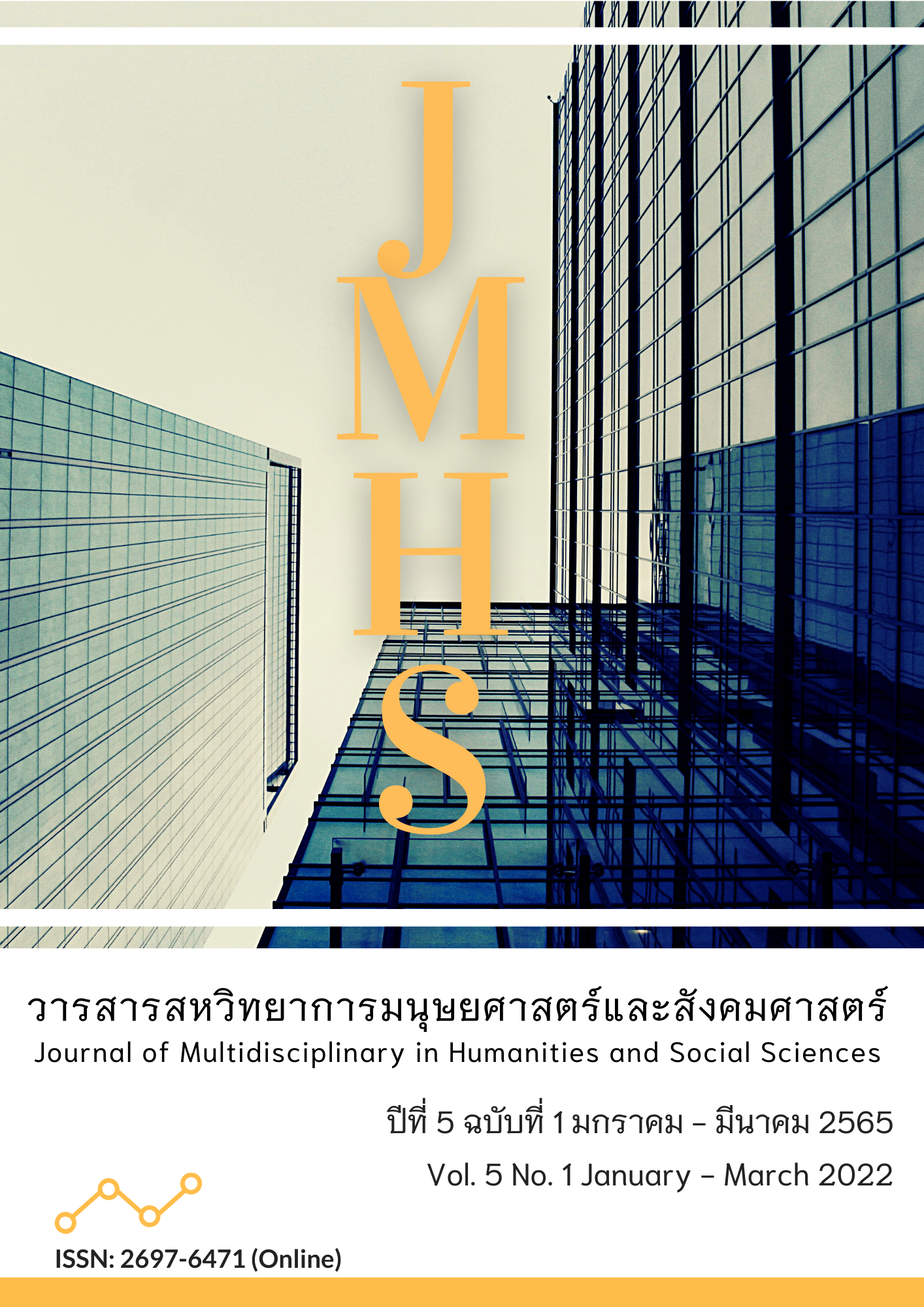Administrator’s Roles and the Effectiveness of School under the Secondary Educational Service Area Office Nakhon Pathom
Main Article Content
Abstract
The purposes of this research were to determine 1) the administrator's roles of school under the Secondary Educational Service Area Office Nakhon Pathom; 2) the effectiveness of school under the Secondary Educational Service Area Office Nakhon Pathom; and 3) the relationship between the administrator's roles and the effectiveness of school under the Secondary Educational Service Area Office Nakhon Pathom. The sample consisted of 28 schools under the Secondary Educational Service Area Office Nakhon Pathom. The research instrument was a questionnaire regarding administrators’ roles based on the concept of Mintzberg and the effectiveness of schools based on the concept of Yukl. The data were analyzed using frequency, percentage, arithmetic mean, standard deviation, and Pearson's Product Moment Correlation Coefficient.
The findings of this research were as follow: 1. The administrator's roles of school under the Secondary Educational Service Area Office Nakhon Pathom, overall and each perspective, were found at the highest level, sorted from the highest to the lowest arithmetic mean as follows: figurehead role, leadership role, negotiator role, disturbance handler role, entrepreneur role, liaison role, resource allocator role, monitor role, disseminator role, and spokesperson role.
2. The effectiveness of school under the Secondary Educational Service Area Office Nakhon Pathom, collectively, was found at the highest level. When considering each aspect, two aspects were found at the highest level and one at a high level; sorted from the highest mean to the lowest mean as follows: efficiency and process reliability, innovation and adaptation, and human resources and relations.
3. The relationship between the administrator's roles and the effectiveness of a school under the Secondary Educational Service Area Office Nakhon Pathom was found at a .01 level of statistical significance.
Article Details

This work is licensed under a Creative Commons Attribution-NonCommercial-NoDerivatives 4.0 International License.
Views and opinions appearing in the Journal it is the responsibility of the author of the article, and does not constitute the view and responsibility of the editorial team.
References
ขัตติยา ด้วงสำราญ. (2564). ศึกษาความสัมพันธ์ภาวะผู้นำของผู้บริหารกับการระดมทรัพยากรของโรงเรียนมัธยมศึกษา สังกัดสำนักงานคณะกรรมการการศึกษาขั้นพื้นฐาน. วารสารศิลปการจัดการ, 5(2), 501-512.
ทิพสุคนธ์ บุญรอด และ มัทนา วังถนอมศักดิ์. (2564). ภาวะผู้นำมุ่งบริการของผู้บริหารสถานศึกษากับคุณภาพชีวิตการทำงานของครูสังกัดสำนักงานเขตพื้นที่การศึกษามัธยมศึกษา เขต 9. วารสารศิลปการจัดการ, 5(2), 486-500.
ธีระ รุญเจริญ. (2557). การบริหารโรงเรียนยุคปฏิรูปการศึกษา. กรุงเทพฯ: เอ็กซเปอร์เน็ท.
ปัทมา โสภิตชาติ และ สายสุดา เตียเจริญ. (2560). ทักษะผู้บริหารที่ส่งผลต่อประสิทธิผลของโรงเรียน สังกัดสำนักงานเขตพื้นที่การศึกษามัธยมศึกษา เขต 9. วารสารการบริหารการศึกษา มหาวิทยาลัยศิลปากร, 7(2), 80-93.
ปาริฉัตร ช่อชิต และ มัทนา วังถนอมศักดิ์. (2561). สมรรถนะผู้บริหารกับประสิทธิผลของสถานศึกษา สังกัดสำนักงานเขตพื้นที่การศึกษามัธยมศึกษา เขต 8. วารสารการบริหารการศึกษา มหาวิทยาลัยศิลปากร, 8(2), 85-95.
พระมหากันตินันท์ เฮงสกุล. (2564). เทคโนโลยีสารสนเทศเพื่อการบริหารการศึกษา. วารสารนวัตกรรมการจัดการศึกษาและการวิจัย, 3(1), 1-10.
ไพผกา ผิวดำ. (2564). ชุมชนแห่งการเรียนรู้ทางวิชาชีพสู่ความสำเร็จของสถานศึกษา. วารสารนวัตกรรมการจัดการศึกษาและการวิจัย, 3(1), 11-18.
สำนักงานเลขาธิการสภาการศึกษา กระทรวงศึกษาธิการ. (2561) แนวทางการบริหารและการพัฒนาสถานศึกษาสู่...โรงเรียนคุณภาพ. กรุงเทพฯ: พริกหวานกราฟฟิก.
สำนักงานเขตพื้นที่การศึกษามัธยมศึกษา เขต 9. (2561). แผนพัฒนาคุณภาพการศึกษาขั้นพื้นฐาน สำนักงานเขตพื้นที่การศึกษามัธยมศึกษา เขต 9 (พ.ศ. 2561 – 2563). สุพรรณบุรี: สำนักงานเขตพื้นที่การศึกษามัธยมศึกษา เขต 9.
สำนักงานคณะกรรมการการศึกษาแห่งชาติ. (2553). แนวทางการประกันคุณภาพภายในสถานศึกษา : เพื่อพร้อมรับการประเมินภายนอก. กรุงเทพฯ: พิมพ์ดี.
อภิญญา กลิ่นถือศีล และ วลัยพร ศิริภิรมย์. (2557). บทบาทที่เป็นจริงและบทบาทที่พึงประสงค์ของผู้บริหารสถานศึกษาในโรงเรียนมาตรฐานสากลจังหวัดชลบุรี สังกัดสำนักงานเขตพื้นที่การศึกษามัธยมศึกษา เขต 18. วารสารอิเล็กทรอนิกส์ทางการศึกษา, 9(3), 447-460.
Damnoen, P. S., Phumphongkhochasorn, P., Pornpitchanarong, S., & Nanposri, N. (2021). Development of Strategies for the Use of Innovative Information in Education for Secondary Schools under the Office of the Basic Education Commission in the Eastern Region. Turkish Journal of Physiotherapy and Rehabilitation, 32(3), 20483 – 20490.
Krejcie, R. V., & Morgan, D. W. (1970). Determining sample size for research activities. Educational and Psychological Measurement, 30(3), 607–610.
Lunenburg, F. C., & Ornstein, A. C. (2012). Educational Administration: Concepts and Practices. (6th ed.). California: Wadsworth Cengage Learning.
Mintzberg, H. (1973). The Nature of Managerial Work. New York: Harper & Row.
Phumphongkhochasorn, P., Damnoen, P. S., Suwannaprateep, T., & Phoomparmarn, U. (2021). National Educational Standards and the Improvement of Thai Education System with World Class. Asia Pacific Journal of Religions and Cultures, 5(1), 75-86.
Songsraboon, R., Thongtao, j., Damnoen, P. S., & Huanjit, P. S. (2021). Course Management Based on Outcome-Based Education (OBE) of Learning by Working in Real Conditions. Turkish Journal of Physiotherapy and Rehabilitation, 32(3), 20491–20499.
Yukl, G. A. (2013). Leadership in Organizations. (8th ed.). New York: Prentice-Hall.


